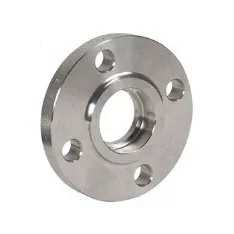-
Cangzhou Yulong Steel Co., Ltd.
-
Phone:
+86 13303177267 -
Email:
admin@ylsteelfittings.com
- English
- Arabic
- Italian
- Spanish
- Portuguese
- German
- kazakh
- Persian
- Greek
- French
- Russian
- Polish
- Thai
- Indonesian
- Vietnamese
- Zulu
- Korean
- Uzbek
- Hindi
- Serbian
- Malay
- Ukrainian
- Gujarati
- Haitian Creole
- hausa
- hawaiian
- Hebrew
- Miao
- Hungarian
- Icelandic
- igbo
- irish
- Japanese
- Javanese
- Kannada
- Khmer
- Rwandese
- Afrikaans
- Albanian
- Amharic
- Armenian
- Azerbaijani
- Basque
- Belarusian
- Bengali
- Bosnian
- Bulgarian
- Catalan
- Cebuano
- China
- China (Taiwan)
- Corsican
- Croatian
- Czech
- Danish
- Esperanto
- Estonian
- Finnish
- Frisian
- Galician
- Georgian
- Kurdish
- Kyrgyz
- Lao
- Latin
- Latvian
- Lithuanian
- Luxembourgish
- Macedonian
- Malgashi
- Malayalam
- Maltese
- Maori
- Marathi
- Mongolian
- Myanmar
- Nepali
- Norwegian
- Norwegian
- Occitan
- Pashto
- Dutch
- Punjabi
- Romanian
- Samoan
- Scottish Gaelic
- Sesotho
- Shona
- Sindhi
- Sinhala
- Slovak
- Slovenian
- Somali
- Sundanese
- Swahili
- Swedish
- Tagalog
- Tajik
- Tamil
- Tatar
- Telugu
- Turkish
- Turkmen
- Urdu
- Uighur
- Welsh
- Bantu
- Yiddish
- Yoruba

Nov . 06, 2024 13:51 Back to list
Metal Flange Plate Design and Fabrication for Industrial Applications
The Importance of Metal Flange Plates in Modern Engineering
In modern engineering and construction, the importance of various components cannot be overstated, and one such essential element is the metal flange plate. Flange plates are critical in connecting various structural elements, providing strength, stability, and flexibility to a range of applications. This article will explore the significance of metal flange plates, their applications, and the key considerations in their selection and usage.
What is a Metal Flange Plate?
A metal flange plate is a flat piece of metal, usually made from materials like steel, stainless steel, or aluminum, which is designed with a raised or flat rim around its perimeter. This design allows it to be bolted or welded to another component, effectively joining different parts of a structure. Flange plates come in various shapes and sizes, tailored to meet the specific needs of different applications. They can be used in pipelines, machinery, and structural frameworks, among others.
Applications of Metal Flange Plates
1. Piping Systems In plumbing and industrial piping systems, metal flange plates are often used to connect pipes, valves, and fittings. They provide a reliable and leak-proof seal, ensuring the safe transportation of liquids and gases. The robustness of metal flanges allows them to withstand high pressure and temperature conditions.
2. Structural Engineering Flange plates play a crucial role in structural applications, such as buildings and bridges. They are used to connect beams, columns, and other structural components, providing the necessary support and stability. The ability to easily disassemble and reassemble flange connections makes them ideal for temporary structures as well.
3. Machinery Assembly In the manufacturing sector, metal flange plates are commonly utilized in the assembly of machinery and equipment. They offer a strong connection between different parts of a machine, allowing for easier maintenance and replacements when necessary.
4. Electrical Enclosures Flanges are also employed in electrical enclosures and junction boxes, where they help secure the enclosure to a mounting surface. This ensures proper grounding and protection against environmental factors.
metal flange plate

Key Considerations for Selecting Metal Flange Plates
When choosing metal flange plates for specific applications, several factors must be considered
1. Material The choice of material is crucial, as it determines the flange's strength, corrosion resistance, and suitability for various environments. For instance, stainless steel flanges are preferred in corrosive environments, while carbon steel flanges are commonly used in structural applications.
2. Size and Thickness The dimensions of the flange plate must be compatible with the components it will be connected to. Additionally, the thickness of the flange should be adequate to withstand the stresses and loads anticipated during operation.
3. Type of Connection Metal flange plates can be designed for different types of connections, including weldable, bolted, or threaded connections. Understanding the specific requirements of the application will help determine the most appropriate flange type.
4. Standards and Specifications Various industry standards and specifications, such as ANSI, ASME, and DIN, govern the design and manufacturing of metal flange plates. It is essential to ensure that the selected flanges comply with relevant regulations for safety and performance.
The Future of Metal Flange Plates
As technology advances and engineering practices evolve, the design and production of metal flange plates continue to improve. Innovations in materials, such as the development of lightweight composites and enhanced alloys, are paving the way for even more efficient and reliable flange solutions. Additionally, advancements in manufacturing techniques, including 3D printing, are allowing for greater customization and precision in flange plate production.
In conclusion, metal flange plates play a vital role in modern engineering, providing critical connections in various applications. Their strength, versatility, and reliability make them indispensable in the construction of safe and efficient infrastructures. As industries continue to evolve, the importance of understanding and utilizing metal flange plates will remain a cornerstone of successful engineering projects.
Latest news
-
ANSI 150P SS304 SO FLANGE
NewsFeb.14,2025
-
ASTM A333GR6 STEEL PIPE
NewsJan.20,2025
-
ANSI B16.5 WELDING NECK FLANGE
NewsJan.15,2026
-
ANSI B16.5 SLIP-ON FLANGE
NewsApr.19,2024
-
SABS 1123 FLANGE
NewsJan.15,2025
-
DIN86044 PLATE FLANGE
NewsApr.19,2024
-
DIN2527 BLIND FLANGE
NewsApr.12,2024
-
JIS B2311 Butt-Welding Fittings LR/SR 45°/90° /180°Seamless/Weld
NewsApr.23,2024











